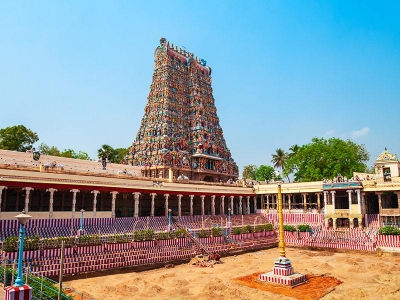Dussehra symbolizes the triumph of good over evil. The word 'Dussehra' is derived from the words 'dus' and 'hara', where 'dus' means ten and 'hara' means annihilated. On this day, Lord Rama slew the demon king of Lanka, Ravana, after a fierce battle. This festival is celebrated on the 10th day of Shardiya Navratri. If you want to know the date of Dussehra this year, check it out.
History of Dussehra
The history of Dussehra goes back to the Ramayana. It describes the story of Lord Rama, who defeated the demon king, Ravana, in Traeayuga. The king of Lanka, Ravana, had abducted Sita, Lord Rama’s wife, leading to a battle with Lord Rama. Rama, accompanied by his younger brother Lakshmana, disciple Hanuman, and an army of monkeys, travelled to Lanka to bring back Sita. He worshipped Durga and emerged victorious eventually, marking the day as Vijayadashami or Dussehra.
The Significance of Dussehra in Indian Culture
Dussehra personifies India's rich cultural tapestry and traditions. This signifies the triumph of good over evil and teaches us that righteousness always prevails.
The Dussehra celebration unites communities across India. The statues of Ravana, Meghnad, and Kumbhakarna are set on fire. This day also marks Goddess Durga's win over the mighty buffalo demon Mahishasura, underpinning the might of feminine power. People celebrate this occasion with fervor, forgetting all the regional and cultural differences.
Why is Dussehra Celebrated?
It is celebrated differently in different parts of the nation. So, going forward, we will delve into how the festival is celebrated in the different regions of India:
North India
In northern India, Dussehra signifies the spirit of “Good always prevails.” The depiction of Rama's life in Ram Leela starts ten days before Dussehra. Numerous theatre groups in villages, cities, and suburbs of North India perform this. Among these celebrations, it's a tradition for many to give gifts on Dussehra to honour the occasion.
South India
In Tamil Nadu, Dussehra celebrations start nine days before Dussehra. These nine days are devoted to the worship of the 3 main deities of Hinduism. Goddess Lakshmi is adored in the first 3 days, as she is the provider of wealth and prosperity, while Saraswati is prayed for the subsequent 3 days, called the deity of knowledge and art. The last 3 days are dedicated to Goddess Shakti, the goddess of valour. In Tamil Nadu, Karnataka, and Andhra Pradesh, miniature statues and beautiful dolls are set up in artificial stages in homes, usually known as 'Bommai Kolu'.
Eastern India
In the Eastern part of the country, Dussehra is celebrated as Durga's victory over the demon Mahishasura. It is supposed that after a fierce battle of nine days, the goddess subdued Mahishasura and slayed her, so this day is famously known as Vijayadashami. Idols of Durga are immersed in waterbodies with great reverence. In Orissa, the festival is called Vijoja Dashami. This day is marked as the conclusion of Sharadiya Durga Puja.
West India
In Maharashtra, Dussehra is related to numerous legends besides Rama. On Dussehra, the flour tree is adored, and its leaves are gifted to the dear ones, with Dussehra's gifts and sweets being considered a good omen. After completing 12 years of exile, Pandavas recovered their weapons from under a Shami tree, where they had stored them. The nine days before Dussehra are famous here as Navratri. The idols of the Goddess installed on the initial day of Navratri are engrossed in water on Dussehra. Therefore, Dussehra has different kinds of importance in several regions of India.
Here are the places you can visit to be a part of the famous Dussehra celebrations,
